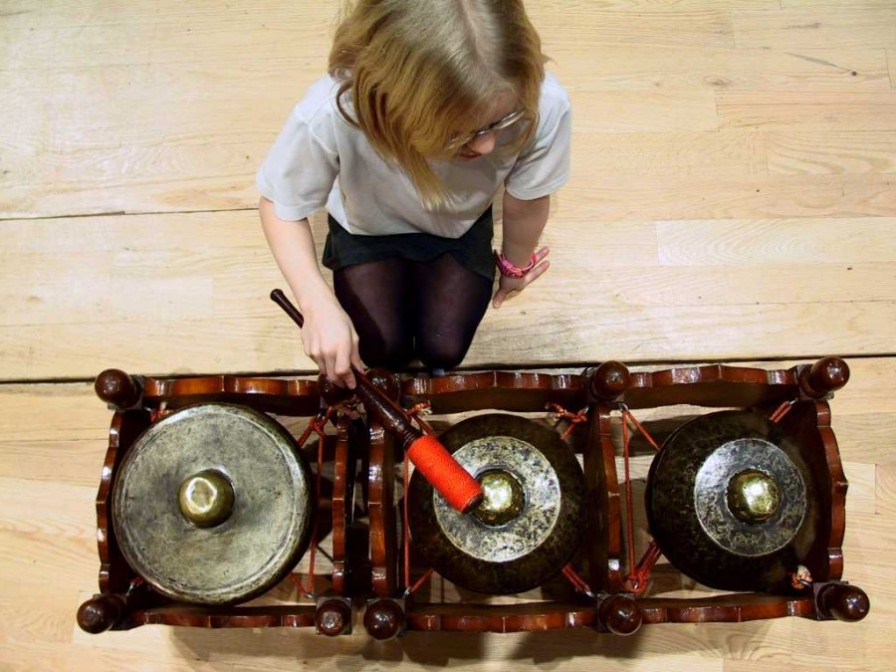What does ‘joined up’ really mean? Partnership working across the formal and non-formal music education sectors

Youth Music research manager Dougie Lonie introduces some exciting new Youth Music research conducted by the Institute of Education looking at the differences (and similarities) between formal and non-formal teaching styles
“There is a confusion amongst music education providers that stems from the discourse surrounding ‘community music’ and the non-formal sector. Terms and labels are insufficiently precise or overlap. This is not a new phenomenon, but can hamper clarity in communication between partners” (Saunders and Welch, ‘Communities of Music Education’, 2012:39-40)
The Communities of Music Education research was commissioned by Youth Music in March 2011 at a time when music education in England was experiencing rapid change. The Henley Review had just been published by the Department for Education, which in turn was preparing its response through the National Plan for Music Education.
As a result of the changes suggested by both publications Youth Music and others in the music education sector sought to reposition their practices and the ‘offer’ of music making to children and young people, ensuring it was as relevant and effective as possible.
A key recommendation in both publications was for music education providers to work together, to ‘join up’ and co-ordinate their services to ensure that all children and young people could have access to high quality educational experiences and progress in music according to their talent and potential. This can be seen in action through the new Music Education Hub model administered by Arts Council England.
In anticipation of this, Youth Music commissioned research to explore how some of its grant holders were working with partners from the public, third, and private sectors in their localities. The aim was to explore where communication and partnership were strong, as well as to identify issues that may limit the potential for successful partnerships. Another crucial aim was to explore the teaching and learning styles adopted in Youth Music funded non-formal music education opportunities so they could be analysed and more easily communicated to music education providers from a wider range of backgrounds.
Two key questions were explored:
- How and why do music education partners work together and what are their roles?
- What is or isn’t different about the provision of non-formal music education from that of other music education?
Dr Jo Saunders from the Institute of Education visited three organisations in receipt of Youth Music Action Zone funding where she interviewed key staff members, observed delivery of music making sessions, and spoke to some of the young people taking part. She found that:
- Often young people do not associate the music they learn in non-formal education with the music they learn at school – they understand it as contributing different things to their musicality
- ‘Joining up’ sectors is not just about structural arrangements and partnership working. Different providers need to be clear about what young people are ‘getting’ from different environments and how. The interpretation and definition of ‘joining up’ and ‘partnership’ can vary from person to person and will have a big influence on how activities are planned and provided
- There is a lack of shared dialogue and terminology between formal and non-formal music education providers. There is a lack of knowledge of what is offered to and experienced by young people in these different environments
- In order for music education outcomes to be most successful it is crucial that young people’s voices are present in both a musical and advisory role, whether in formal or non-formal settings
- Rather than being seen as ‘flash in the pan’ or having time limited effects, non-formal musical ‘hooks’ can act as a way of re-engaging young people with education and developing their musicality over much longer periods of time subsequently.
In short, by having a healthy music education sector which offers learning across genres and styles to suit all needs and interests we are more likely to support the creative education needs for every child, both in school and out of school.
Importantly, the research suggests that ‘delivery’ (whether in a formal or non-formal context) must always be focused on a high quality experience and the attainment of musical literacy – they simply have to be co-present for successful musical learning to occur. Teachers and non-formal practitioners both seem to know this but don’t necessarily understand it from each other’s perspectives. Or do they?
All comments and suggestions welcome!
For a fuller discussion of the markers of quality in non-formal education please visit this page
To download the executive summary or the full research report please visit this page
